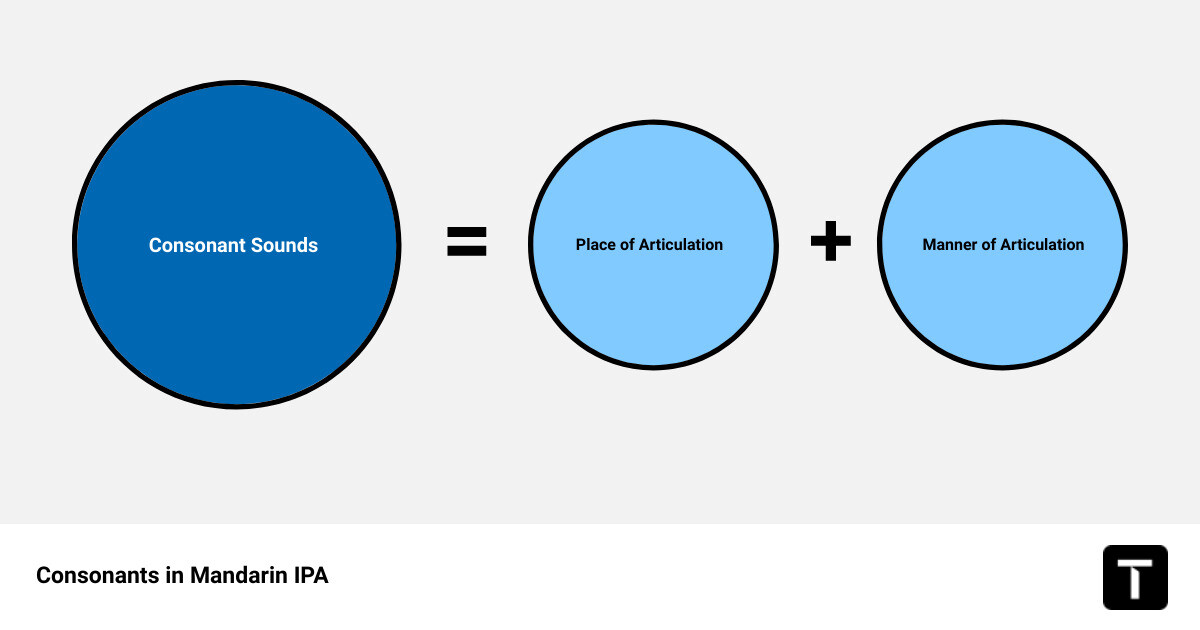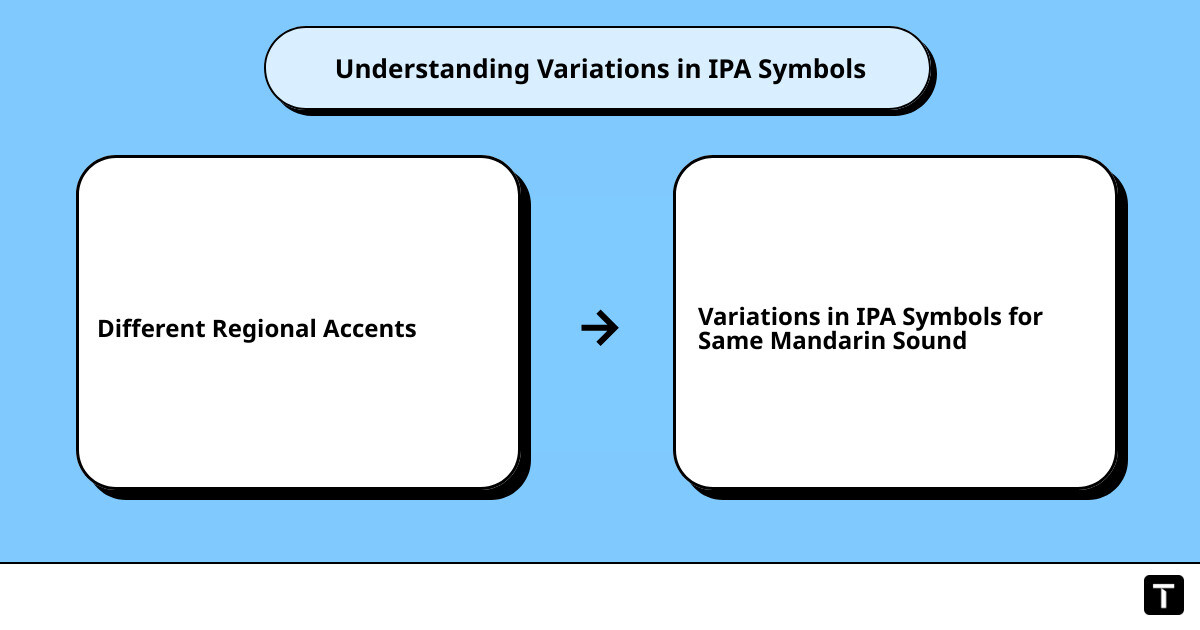Introduction to Pinyin and IPA
Navigating the labyrinth of language learning can feel overwhelming, especially when it involves the complexities of Mandarin Chinese. Yet, with the right tools and methods, you can illuminate your path to fluency. In this article, we will delve into the world of Pinyin and the International Phonetic Alphabet (IPA), two crucial elements in mastering Mandarin pronunciation. We will also explore how converting Pinyin to IPA can significantly enhance your language learning journey.
Brief Overview of Pinyin
Pinyin is the official romanization system for Standard Mandarin Chinese in mainland China, Malaysia, Singapore, and Taiwan. It is a critical tool that aids non-native speakers in learning the pronunciation of Mandarin words and phrases. The system uses the Latin alphabet to represent the sounds of Mandarin, making it more accessible for western learners. However, while pinyin is helpful, it has its limitations. One of them is that certain symbols can represent multiple sounds, and you need to learn specific rules to keep track of them. This is where the IPA comes into play.
Brief Overview of IPA
The International Phonetic Alphabet (IPA) is a system of phonetic notation that provides accurate and consistent representations of the sounds of spoken language. Unlike Pinyin, IPA is designed to be phonetically transparent, meaning each symbol corresponds to a unique sound. This makes it an incredibly useful tool for adult learners who can benefit from a clear, visual representation of the specific sounds they are trying to produce.
Importance of Converting Pinyin to IPA
So why should you consider converting Pinyin to IPA as part of your Mandarin learning journey? The key lies in the precision and clarity that IPA offers. It cuts through ambiguity, making it easier to distinguish subtle differences in sounds that may be indistinguishable in Pinyin. By learning to convert Pinyin to IPA, you equip yourself with a high-precision tool that can enhance your understanding of Mandarin pronunciation.
While it won't replace the need for a good teacher or diligent practice, using IPA can make your path clearer and your progress faster. It's an investment of time and effort that can pay off with improved pronunciation and a deeper understanding of Mandarin. In the following sections, we'll guide you through the basics of IPA for Mandarin, introduce you to useful tools for converting Pinyin to IPA, and share tips for effective learning. So, let's dive in and unlock the world of linguistics with Pinyin and IPA!
Understanding the Basics of IPA for Mandarin
Unlocking the world of linguistics begins with understanding the four fundamental components of IPA for Mandarin: consonants, vowels, diphthongs, and tones. These elements form the core of Mandarin pronunciation, and grasping them will give you a solid foundation for your Mandarin learning journey.

Consonants in Mandarin IPA
In the Mandarin language, there are 21 consonants, each represented by a unique IPA notation. Unlike the standard alphabets where a letter can represent multiple sounds, the IPA ensures a unique symbol for each consonant sound. This precise notation dramatically aids in understanding and producing Mandarin consonants accurately. For example, the Mandarin consonant 'b' is represented as [p] in IPA, denoting an unaspirated plosive sound. Learning the nuances of these sounds can enhance your Mandarin pronunciation skills.
Vowels in Mandarin IPA
Mandarin boasts six single vowels, each paired with a unique IPA symbol. For instance, the vowel 'a' is represented as [a] in IPA. Acquainting yourself with the IPA symbols for Mandarin vowels can help you distinguish subtle differences in sounds that might be indistinguishable to an untrained ear.
Diphthongs in Mandarin IPA
Diphthongs, or complex vowel sounds that combine two individual vowels within the same syllable, add another layer of complexity to Mandarin pronunciation. Mandarin has several diphthongs, each with a unique IPA symbol. For example, the Mandarin diphthong 'ai' is represented as [ai̯] in IPA. Familiarizing yourself with these symbols can lead to a more nuanced understanding and accurate pronunciation of Mandarin diphthongs.
Tones in Mandarin IPA
The final piece of the Mandarin IPA puzzle is tones. Mandarin is a tonal language, and IPA provides a system for notating these pitch contours. Each syllable in Mandarin has one of four tones, each with a distinct pitch contour. For example, the first tone in Mandarin is a high level tone, represented in IPA with a horizontal line above the vowel (e.g., [mā]). Understanding the IPA notations for Mandarin tones is crucial for accurate production and perception of Mandarin tones.
Grasping these four components of IPA for Mandarin—consonants, vowels, diphthongs, and tones—will put you on the path to mastering Mandarin pronunciation. Each symbol, be it for a consonant, vowel, diphthong, or tone, provides a precise roadmap for how to produce the sound. With consistent practice and a little patience, you'll soon be sounding more like a native Mandarin speaker.
Tools for Converting Pinyin to IPA
A wealth of digital resources are available to aid you in your transition from Pinyin to IPA. Let's explore some of these tools and see how they can simplify your Mandarin learning journey.
Mandarin to IPA Translator
A Mandarin to IPA Translator is your first stop in the world of converting Pinyin to IPA. This tool allows you to enter a Mandarin word and, if it's in the database, the corresponding IPA representation will appear. This is a straightforward way to see the IPA equivalent of a Mandarin word, helping you get accustomed to this phonetic notation.
IPA Converters
A more interactive tool is an IPA Converter. One such tool is the Chinese Phonetic Transcription Converter. This handy online utility allows you to convert Chinese text to Pinyin and International Phonetic Transcription. It offers a simple way to understand the pronunciation of characters, enhancing your comprehension and pronunciation of Mandarin words.
IPA Charts for Mandarin
For a more comprehensive view of Mandarin sounds and their IPA equivalents, IPA Charts for Mandarin are indispensable. These charts provide a detailed overview of the International Phonetic Alphabet as it applies to Mandarin Chinese. They contain comprehensive descriptions of Mandarin sounds, from consonants and vowels to tones, which can be an excellent reference for learners at all levels.
These tools, with their user-friendly interfaces and clear explanations, are designed to make the conversion from Pinyin to IPA as smooth as possible. As you familiarize yourself with these resources, you'll gain a deeper understanding of how Mandarin sounds are represented in the International Phonetic Alphabet, thereby improving your Mandarin pronunciation.
Remember, the path to fluency isn't always linear, but with persistence, patience, and the right tools, you're well on your way to mastering Mandarin pronunciation.
How Traverse App Facilitates Pinyin to IPA Conversion
The road to Mandarin fluency can seem like a winding path, but the right tools can transform it into a straight highway. One such tool that brings a systematic approach to learning Mandarin pronunciation is the Traverse App.
Overview of Traverse App
The Traverse App is no ordinary language learning platform. It's an ingenious blend of mind mapping, spaced repetition flashcards, and connected note-taking in a single powerful app. It caters to different learning styles and champions information retention. Instead of learning in isolation, the app encourages you to connect different points of knowledge, offering a holistic view of your learning content. This interconnectedness is especially useful when learning Pinyin IPA, as it enables you to visualize the connection between different sounds, tones, and characters.
How Traverse Partners with Mandarin Blueprint for Effective Learning
One of the strengths of the Traverse App is its ability to partner with other learning resources for enhanced learning experiences. Traverse's collaboration with Mandarin Blueprint, for instance, allows learners to access interactive and visually stimulating Mandarin learning content. This partnership aids in drilling down Pinyin IPA, unraveling its complexities, and helping you understand and remember Mandarin sounds better.
Importing Anki Decks for Continued Learning
In addition to its unique features, the Traverse App also allows you to import your Anki decks. If you're an Anki user, you can continue learning with the decks you've already created, but now in a more visually stimulating and interactive environment. This feature comes in handy when you want to review your Pinyin IPA flashcards on a more engaging platform.
In essence, learning Pinyin IPA becomes a less daunting task with the Traverse App. It provides a versatile platform for understanding and practicing the essential components of Mandarin pronunciation. With its unique blend of features, learning Mandarin becomes not just more effective, but also more enjoyable. So, why wait? Embrace the power of the Traverse App and unlock your potential in Mandarin learning.
Tips for Learning IPA for Mandarin Pronunciation
As we delve deeper into the linguistic realm of Mandarin Chinese, we need to equip ourselves with the right strategies for mastering the International Phonetic Alphabet (IPA) for Mandarin pronunciation. Embarking on the IPA journey is not about merely memorizing a set of symbols but also understanding the phonetic nuances they represent. Let's explore some crucial tips to facilitate your learning process.
Importance of Consistency in IPA Symbols
When learning IPA for Mandarin, consistency is key. Each symbol in IPA stands for a unique sound, and that sound only. This phonetic transparency is the true beauty of IPA. But remember, this transparency can only be beneficial if you are consistent in your learning and practice.
Choose one source as your primary reference and stick with it to avoid confusion. As mentioned earlier, linguists may not always agree on which symbol to use for a specific sound in Mandarin. Hence, using multiple sources may lead to variations and cause unnecessary confusion.
Using IPA for Targeted Practice
To make the most out of IPA, you need to understand what the symbols mean and how the sounds they represent are produced. This understanding requires a basic knowledge of how the human voice works and how the sounds of languages are structured.
For instance, knowing that the Mandarin consonant 'b' is represented as [p] in IPA, denoting an unaspirated plosive sound, can enhance your pronunciation skills. This kind of targeted practice, focusing on specific sounds and their IPA symbols, can significantly improve your Mandarin pronunciation.

Understanding Variations in IPA Symbols for Mandarin Sounds
While IPA provides a precise transcription of Mandarin sounds, it's important to remember that there can be some variations in how the symbols are used. Some authors might use diacritics to further specify vowels, but this type of narrow transcription is seldom useful for non-experts.
Remember, there will always be individual and regional differences in pronunciation, and each author may have their own reasons for choosing a certain symbol. As a learner, your goal is not to get caught up in these debates but to focus on understanding and producing the Mandarin sounds accurately.
In conclusion, mastering IPA for Mandarin pronunciation requires consistent learning, targeted practice, and understanding the potential variations in IPA symbols. This may seem like a daunting task at first, but with diligent practice and the right resources, such as the Traverse App, you can successfully navigate the phonetic landscape of Mandarin Chinese. So, embrace the power of IPA, and unlock your potential in Mandarin pronunciation!
Conclusion: The Role of IPA in Mandarin Learning
Recap of the Importance of IPA in Mandarin Learning
Stepping into the world of Mandarin Chinese and mastering its pronunciation with Pinyin and IPA is indeed a marathon, not a sprint. Throughout this comprehensive guide, we've explored the intricate and fascinating landscape of Mandarin pronunciation, honed our understanding of the International Phonetic Alphabet (IPA), and learned how to effectively convert Pinyin to IPA for improved Mandarin pronunciation.
We discovered that IPA, unlike Pinyin, eliminates ambiguity by assigning a unique symbol to each sound. Through this system, we can gain a more precise understanding of Mandarin sounds, which is crucial to perfecting our pronunciation. We also delved into the world of consonants, vowels, diphthongs, and tones in Mandarin IPA, and introduced efficient tools for Pinyin to IPA conversion.
Perhaps most importantly, we learned how the Traverse App and its partnership with Mandarin Blueprint can facilitate an effective and enjoyable learning journey. From leveraging the power of Anki decks to employing science-backed learning strategies, we're equipped to navigate the linguistic landscape of Mandarin with newfound confidence.
Encouragement for Continued Practice with IPA
As we wrap up this comprehensive guide, let's remember that the key to mastering Mandarin pronunciation lies in consistent and targeted practice with IPA. Embrace the power of IPA and see it as an indispensable tool in your language learning toolkit. And remember, while IPA provides a solid foundation, it doesn't replace the need for listening practice and feedback.
IPA is a guide, a roadmap to pronunciation, but your journey's success ultimately depends on your persistence, patience, and practice. It's through consistent application of your IPA knowledge in your language practice that you'll see real progress in your Mandarin pronunciation.
So, stay curious, keep exploring, and continue practicing. The road to fluency in Mandarin Chinese is filled with fascinating discoveries and milestones. Enjoy the journey, and remember that every step you take brings you closer to mastery.
As you continue your exploration into Mandarin Chinese, remember to leverage the power of technology. With the right tools, strategies, and mindset, you'll cross the finish line with flying colors.
Good luck, and happy learning!

